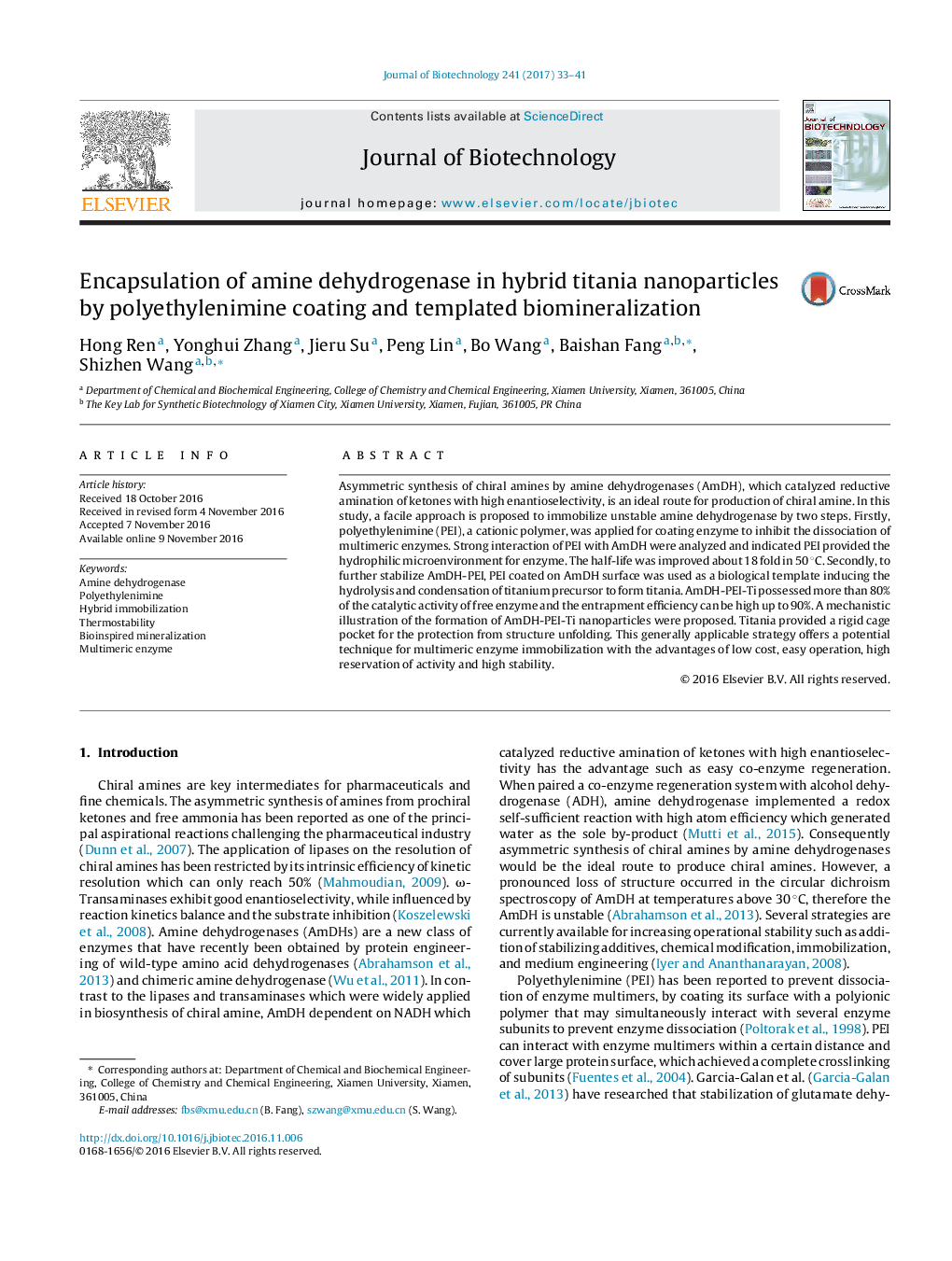| کد مقاله | کد نشریه | سال انتشار | مقاله انگلیسی | نسخه تمام متن |
|---|---|---|---|---|
| 6452176 | 1417003 | 2017 | 9 صفحه PDF | دانلود رایگان |
- Biomineralization of amine dehydrogenase for asymmetric synthesis of chiral amines, the important motifs in pharmaceuticals.
- Polyethylenimine coating on AmDH surface inhibited the dissociation of multi-subunits which indicated by interaction analysis.
- PEI induces biomineralization of titanium precursor and form novel AmDH-PEI-Ti hybrid nanoparticles.
- Mechanism insights of rigid cage effect were proposed by morphological analysis and inactivation kinetics.
- This novel strategy offers a cheap, simple, high activity reservation, and enhanced stability technique for multimeric enzyme immobilization.
Asymmetric synthesis of chiral amines by amine dehydrogenases (AmDH), which catalyzed reductive amination of ketones with high enantioselectivity, is an ideal route for production of chiral amine. In this study, a facile approach is proposed to immobilize unstable amine dehydrogenase by two steps. Firstly, polyethylenimine (PEI), a cationic polymer, was applied for coating enzyme to inhibit the dissociation of multimeric enzymes. Strong interaction of PEI with AmDH were analyzed and indicated PEI provided the hydrophilic microenvironment for enzyme. The half-life was improved about 18 fold in 50 °C. Secondly, to further stabilize AmDH-PEI, PEI coated on AmDH surface was used as a biological template inducing the hydrolysis and condensation of titanium precursor to form titania. AmDH-PEI-Ti possessed more than 80% of the catalytic activity of free enzyme and the entrapment efficiency can be high up to 90%. A mechanistic illustration of the formation of AmDH-PEI-Ti nanoparticles were proposed. Titania provided a rigid cage pocket for the protection from structure unfolding. This generally applicable strategy offers a potential technique for multimeric enzyme immobilization with the advantages of low cost, easy operation, high reservation of activity and high stability.
142
Journal: Journal of Biotechnology - Volume 241, 10 January 2017, Pages 33-41
